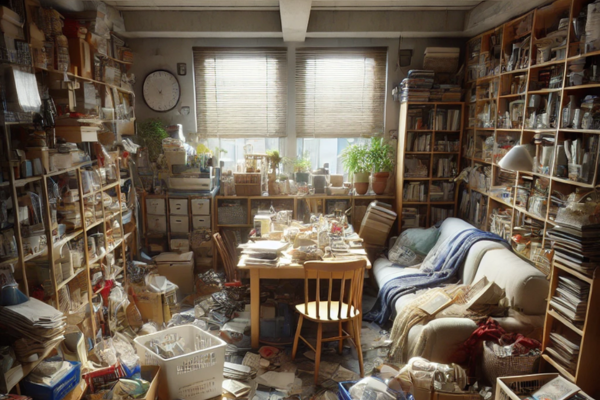A mild hoarder house may not seem alarming at first glance. It might resemble a home that’s simply cluttered, with items strewn about or piling up in corners. However, beneath the surface lies the beginning stages of a behavioral issue that, if left unchecked, can escalate into a full-blown hoarding disorder. Addressing the early signs of hoarding in a mild hoarder house is crucial for maintaining a healthy and functional living environment. This article will explore the characteristics of a mild hoarder house, the psychological factors involved, and practical strategies for reclaiming control over your space.
Identifying a Mild Hoarder House
A mild hoarder house is characterized by clutter that is beginning to accumulate beyond normal levels of disorganization. This clutter often starts in specific areas, such as a spare bedroom, garage, or basement, where items are kept “just in case.” Over time, these areas may become increasingly difficult to use, as the number of items grows and starts to spill into other parts of the house.
The key difference between a mildly cluttered home and a mild hoarder house lies in the intent and emotional attachment to the items. In a mild hoarder house, the homeowner may find it challenging to discard things, even if they no longer serve a purpose. They might hold onto items for sentimental reasons or because they believe they will need them in the future, despite having no immediate use for them.
Psychological Factors Behind a Mild Hoarder House
Several psychological factors can contribute to the development of a mild hoarder house. Understanding these factors is essential for addressing the behavior before it escalates.
- Sentimental Attachment: Many people who hoard have a strong emotional connection to their belongings. They may associate certain items with memories or people, making it difficult to let go.
- Fear of Waste: A common mindset among mild hoarders is the fear of wasting something that could potentially be useful. This leads to the accumulation of items that are kept “just in case,” even if they have no immediate use.
- Indecisiveness: Hoarders often struggle with making decisions about what to keep and what to discard. This indecision can result in procrastination, leading to the buildup of clutter.
- Anxiety and Stress: The thought of discarding items can provoke anxiety, making it easier to hold onto everything rather than face the discomfort of letting go.
The Impact of Living in a Mild Hoarder House
While a mild hoarder house may not yet be dangerous, the clutter can still have significant impacts on daily life. The mess can create stress, reduce productivity, and make it difficult to find important items. Over time, the clutter can also affect relationships, as family members or roommates may become frustrated with the disorganization.
Furthermore, living in a cluttered environment can have subtle effects on mental health. The constant presence of disorder can contribute to feelings of overwhelm, guilt, and embarrassment. These negative emotions can, in turn, make it even more challenging to address the clutter, creating a vicious cycle.
Practical Decluttering Strategies for a Mild Hoarder House
Addressing a mild hoarder house requires a combination of practical strategies and emotional support. The following tips can help you begin the process of decluttering and organizing your home.
- Start Small: Tackling the clutter all at once can be overwhelming. Begin by focusing on one area at a time, such as a single room or even just a drawer. Small victories can build momentum and motivation.
- Set Clear Goals: Define what you want to achieve with your decluttering efforts. Whether it’s clearing a room for a new purpose or simply reducing the amount of stuff you have, having clear goals can keep you focused.
- Use the Four-Box Method: As you go through items, categorize them into four boxes: Keep, Donate, Sell, and Discard. This method helps make decisions easier and ensures that everything has a designated place.
- Implement a One-In, One-Out Rule: For every new item that comes into your home, commit to removing one existing item. This rule helps prevent the accumulation of new clutter.
- Seek Support: If the process feels too difficult to tackle alone, consider enlisting the help of a friend, family member, or professional organizer. Sometimes, having someone else there can make the task less daunting.
- Address Emotional Attachments: If you find it hard to part with certain items due to sentimental reasons, try to find alternative ways to honor those memories. For example, taking a photo of the item or creating a memory book can allow you to let go of the physical object while keeping the sentiment.
A mild hoarder house is a warning sign that should not be ignored. By recognizing the early signs of hoarding behavior and taking proactive steps to declutter, you can prevent the situation from escalating. While the process may be challenging, the benefits of living in a clean, organized, and functional space are well worth the effort. With the right strategies and support, anyone can turn a mild hoarder house back into a comfortable and enjoyable home.

